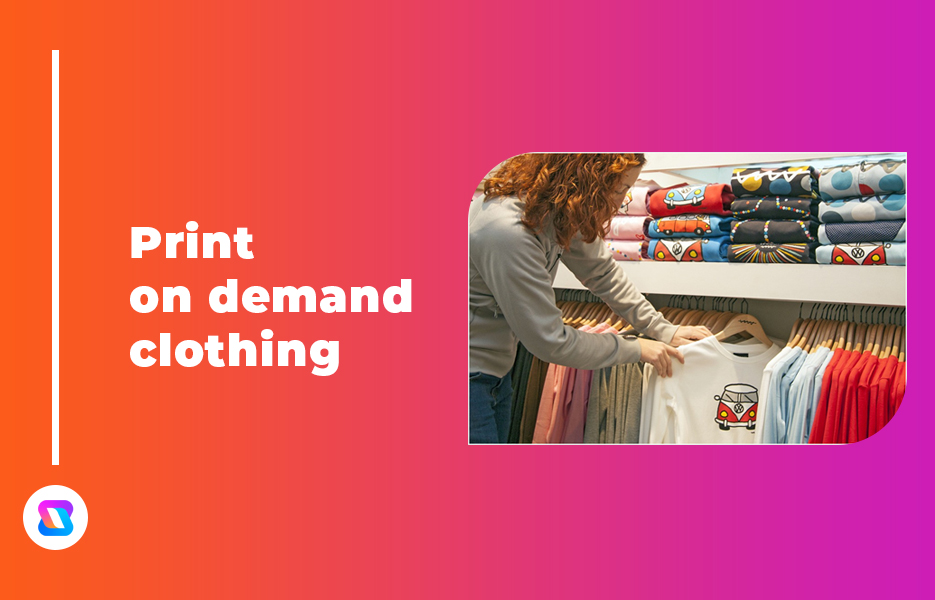Low investment business ideas to start online
But why are you thinking about starting a business, and why online? Perhaps you read our blog post full of inspirational business quotes, and are raring to go now. Maybe you read our small business ideas post, and you’re doing your research to get going. (good for you if you are – more people really should!) Perhaps you have another reason to start a business online. It doesn’t matter what motivates you – what is important is that you want to get started. We hear lots of reasons that people have when they’re thinking about starting their own business. Some of the goals that Avasam business owners had before they started include:
- Having more time to spend doing other things
- Being able to fit work around family
- To be able to work flexibly, wherever in the world they are and whenever they choose to work
- To be free from bosses and the restrictions of 9-5
- To earn money in extra time – for holidays, for savings, and so on
- Finally being their own boss and making all the decisions

Unfortunately, there’s also almost as many reasons people give for not actually starting their own business! Here’s a few we’ve heard:
- “It costs too much money.”
- “I don’t think I’ll be successful.”
- “I’m scared about getting the accounts wrong.”
- “There’s too many people doing it already – I’ve checked online!”
- “What if I mess it up and end up failing?”
Now, some of those reasons might end up being true, and yes, of course you might fail. But if you don’t try, you’ll never know! We quoted plenty of incredibly successful businesspeople talking about failure in our quotes blog. Overwhelmingly, the overall message was that fear of failure should never be a reason to stop you following your dreams. Hang onto that motivation and keep that dream in mind as you build your business.
That said, starting your own business is hard work. We can’t tell you it’s easy, although some are easier than others, especially with the right tools to support you. Some ideas might need a small amount of money to get going. But there are some business ideas that need absolutely no cash investment at all! If that’s the position you’re in, and you have the motivation to put the work in, great! You just need to keep your energy high, stay determined and find what is right for you.
The ideas we’ve outlined in our blog post are good ones, and ones you can be very successful with. However, they’re not whole ideas in themselves – they’re there to inspire you. You will still need to find a unique idea and niche that you can build into, that customers will want to engage with. Without your niche, you risk becoming the same as so many others creating the same type of business. Your niche is what makes you special.
When we talk about each idea, we’ve also discussed how to diversify your business once you’re successful with that idea. If you really don’t have any money to invest, all is not lost! Try starting your business at a different point, so you can start building income earlier. Once you have that income flowing in, you can work towards doing the bit you’re really excited about.
Set up a business selling
We know – you’re probably already thinking that you don’t have space to keep stock, or that you don’t have money to buy stock so you can get started. Well, that business model does still occur, but it’s not the only way to build a successful business selling. You don’t have to buy, store and handle goods yourself anymore – although of course, if you want to, you can!
Search for DropShipping and you’ll find thousands of links to articles talking about how to start DropShipping from China using AliExpress. While that’s one way into selling, it can be fraught with difficulties that put people off. When you consider the time zones, language barriers and the risk of finding a reliable supplier… It is easy to understand why people think it isn’t the right approach for them and choose not to go for it. But it doesn’t have to be difficult though – especially if you can find UK, or European suppliers such as the ones that you find on Avasam.

While you’re doing your research, you will almost certainly stumble on people claiming DropShipping is the holy grail. You’ll be able to quit your job and buy a Ferrari in a week! (other fancy sports cars are available…!) Now, we don’t dispute that some people might indeed eventually achieve that Ferrari as a result of starting their DropShipping business. But let’s get real – nothing good comes easy, and all good things take time – and the truth is, it is definitely going to take more than a week to create a successful business! Not only that, there’s a lot of work to do before you start making sales, since you will need to put effort into marketing. But if you’re keen to start your own business, DropShipping is a good option, and can be diversified easily.
We talked about eCommerce, and how to get started with it. The first thing you’ll need to do is research – what you want to sell, and who your target customers are. We have talked about selling online before, and in this post there’s some great ideas. You’ll need to find your technology solutions, and a great supplier – which can be tricky in itself!
The secret DropShipping success in the UK is making sure you have reliable UK suppliers, and a solid, reliable platform. We couldn’t find any platforms offering the amount of functionality that Avasam does, so we built it! The platform itself (without getting too technical) does everything you need it to, including connecting you to suppliers that we verify to ensure your success. Avasam suppliers are primarily UK-based, so there’s no problem with communication barriers or time delays. (Some of our suppliers are based in mainland Europe, but they are very reliable, and provide fast shipping. Our sellers say this is a huge improvement on their experiences working with suppliers further afield.) The majority of our suppliers send your orders at the same speed as Amazon Prime orders – perfect for happy customers!
Whether you use Avasam or choose other solutions, here’s a few things to consider when choosing your DropShipping supplier(s):
- Make sure they have the capacity to fulfil your orders if you get busy. Make a contingency plan – you don’t want to be cancelling orders because your supplier is out of stock. Cancelling leads to damaging negative reviews and bad word-of-mouth, and your contingency plan might be as simple as engaging with a second supplier who has the same items. Unless an item suddenly becomes a must-have, there’s little chance it will sell out everywhere.
- Make sure they’re reliable with everything. Your business depends on them, so make sure they’re easy to communicate with, and that they respond quickly. How quickly do they dispatch your orders? You need them to be sending your orders as quickly as they do their own orders. If they can guarantee deliveries to Amazon Prime standard, so much the better. They need to be answering your emails, and your calls quickly too though. With a good DropShipping solution, you shouldn’t need to speak with them too often, however, with the best will in the world, sometimes things go wrong. You should still be able to have a good working relationship with them, and get your queries answered quickly. If there is the ability to automate further – such as with our returns process – then so much the better.
- Make sure your supplier has a reliable setup. Sure, you can do manual setups for each step in your process, but we’re not sure why you would. So much can be automated now, which eliminates errors and just makes everything so much more efficient. The good news is, many suppliers are choosing to automate their feeds and orders. There’s a lot of platforms out there that claim to do everything you need when it comes to DropShipping. Some of them might do what you need, but make sure you do your research! Read the fine print, and be sure the platforms you’re considering do exactly what you need them to do. Many platforms make great claims, but really, you end up paying extra for additional – and often necessary – add-ons and apps.
To make the most of your DropShipping business, you’re going to need to start by finding a successful product. You could sell what is trending, but your margins might end up being thin because of so much competition. A better approach is to find a niche, starting with just a few products, and expand from there. Once you have the hang of it, your store can have as many items as you like in no time! Many of our Avasam sellers who start with one or two products expand to hundreds very quickly, and are successful when they have a mix of products – high value products with a bigger margin, and well as lower value products that sell in high volumes.
Once you have your store and you’re selling well, there are plenty of ways to expand your business. You could write eBooks, guides or a blog that’s linked to your products. You might become an influencer in your spare time, or start creating your own products. The possibilities for passive income, and further diversifying, are endless.
Print on demand clothing
If you’re lucky to have artistic flair, and enjoy creating designs then this one could be for you! Printing on demand means you don’t have to invest any money in stock. Your printer and supplier takes care of that, as well as sending the items to the customer. It’s one of several types of DropShipping, except that you have a lot more influence over the products you’re selling, since you’re designing the print.

There are all types of items that you can apply your designs to! Many people start with t-shirts, but don’t think that is as far as you can go. You can produce hats, cushion covers, canvas tote bags, hoodies, phone cases, folders for work… It’s up to you, and should depend on what you think your target customer will want to buy.
Your designs should be unique – you need to ensure you’re not copying anyone else’s work and infringing copyright. But wherever there is a passion within a group, there’s a potential demand for printed clothing. Think dancers, gamers, cat lovers, sports fans, fans of TV shows, music, podcasts… Once you have identified your niche, you can get started! Maybe your designs don’t fit a single category, and maybe that could be your niche! (If that’s the case, your challenge is how to market your products… It’s not impossible though!)
If you don’t have the artistic skills that you’d like, don’t worry. You can definitely still make the most of this idea, especially if you’re thinking about adding it to an existing business. Diversifying your income is always a good idea! If you have a talented friend or family member, work with them, or find a designer to work for you. This isn’t necessarily as expensive as it might seem. There’s plenty of freelance websites that you can find designers – as well as people with other skills that you can outsource aspects of your business to.
Here’s a few that get great reviews:
Fiverr – Your payments are protected on Fiverr. You know the price upfront, there are no hourly rates, and your payment isn’t passed to the freelancer until you’ve approved the work.
Upwork – You post what you’re looking for, then you’ll receive bids from freelancers. You can then interview and hire the right designer for you. You can pay hourly, or fixed price.
Dribbble – Dribbble gives you access to some of the world’s best design professionals. Simply search for the skill you’re looking for, and work with whoever’s the best fit for you.
One thing to note though, when it comes to printing on demand. Since you’re paying for each product separately, each unit will cost more than if you were ordering in bulk. Although you might think this is a bad thing, as the business owner, it can actually be good news. It means you lower the risk of ending up with piles of stock that you can’t sell, and you haven’t paid out for anything you haven’t sold.
On top of not paying for your stock until you’ve had your orders, there’s no need to pay out for a professional photographer for your stock shots either. You can use mock-up templates – meaning there’s even less money to invest. It’s a good idea to order samples to check quality is to the standard you’d like, but these are often provided at a discount. If you want to take your own photos, you can use those samples to photograph for your listings. There are plenty of different print on demand companies you can engage with, so as always, do your research and find one that suits your needs.
When it comes to diversifying your print on demand clothing business, there’s plenty of options. Think about adding other clothing options to your line from suppliers that dispatch straight to your customer. (A type of DropShipping business) However your business evolves, you’ll need to have an active social media presence – and there are more eCommerce options for social media channels than ever before, giving you more chances to make sales, but you could also increase your social media work and grow to become an influencer, or partner with other brands to sell your designs – it can all add up to additional income!
Write and sell a book

It’s easy to say, isn’t it – just write and sell a book? But if you think you have a book in you, then why not go for it and start writing? Take it from someone who had finished and self-published her first book though… Writing a whole book is a very different experience to writing for the web. Not only that, writing fiction is very different to writing a memoir (as mine is), or creating a non-fiction guide. But depending on your subject matter, it doesn’t have to be an epic the size of War and Peace, and whatever you’re an expert in is the perfect subject for your book.
There’s plenty of guidance on how to tackle writing your first book, so we won’t replicate that here. But certainly, it’s well worth investing time in careful planning. Sitting down to a blank screen and trying to shoot for more than 50,000 words instantly is a recipe for disaster. But with careful planning, and breaking your content into shorter chunks, you can manage your writing much more easily. Drafting 500 words at a time is much easier than trying to go for 3,000 in one go – and many successful writers suggest breaking it down even further. Terry Pratchett famously wrote just 400 words a day – and having sold over 85 million books worldwide, it’s clearly a successful strategy! Many other famous authors aim for small chunks too. Once you hit your small target, it’s likely that you’ll be motivated, and so keep going and write more. And even if you don’t write past that small word count, at least you will have added more. Keep that up each day, and you’ll soon find yourself with a book! Work out what works for you though – Steven King says he likes to get 10 pages a day, which amounts to around 2,500 words double spaced.
How many words should my book be?
This is another one of those issues that boils down to ‘it depends’. Generally, it depends on who you are writing for, and what is contained in the book.
Children’s picture books are recommended to be 500-600 words
Children’s chapter books are recommended to be 1,000-10,000 words
Young adult books are recommended to be 40,000-70,000 words
Novels are recommended to be over 40,000 words
Adult fiction is recommended to be between 80,000-100,000 words
It’s recommended – certainly until you’re a well-established author, at least – to work within these guidelines, especially if you want to engage with publishers.
On Kindle, or other eBook formats:
Non-fiction is recommended to be over 10,000 words
Short stories are recommended to be over 5,000 words
Novels are recommended to be over 50,000 words
If you’re writing fiction, there’s a myriad of categories your work might fall under. Is it a thriller, science fiction, a romance, a comedy or an action adventure? Who is it for? You might have written your book for your children, and think it might appeal to other children too. Perhaps you’ve had the storyline in mind for years and now is the time to let it out! There’s lots to consider, even if you think your book is ‘just a story’.
With non-fiction there’s also a huge number of topics you could be writing about. If you’re a talented baker or chef, you might put your recipes into a book to distribute. If you’re an expert in local history, perhaps you’ll put that together to tell a bigger story. You might write a memoir, or you could even put together a book of puzzles – all of these are great reasons to get to work.
Although we’re thinking of writing books here as just the written word, they don’t have to be. If you’re a talented artist or photographer, or a comic or manga artist, try publishing your work in a book. Are you one of the lucky few who can write well and are a great photographer or artist as well? If you are, we envy you, but if so, what are you waiting for?
We think the easy part of writing a book is actually publishing your work. You might think you need a deal with a publisher, but that’s not strictly true anymore. Books that are printed on demand works in a similar way to printing clothing on demand. When you receive an order, your book gets printed and dispatched. There are plenty of different print on demand publishers who will create, order and distribute your books, in either digital or physical formats.
There’s advantages to print on demand too. Your book might be for a small, niche audience, with less appeal to the wider market. That means it’s less likely to be of interest to mainstream publishers – but that doesn’t mean readers don’t want your work! To get your work to your target readership, print on demand and eBooks are the way forward. It means you are in complete control, and can market your work accordingly.
An easy option is to self-publish your book on Amazon with Kindle Direct Publishing. Kindle users download your work directly to their device, and you can make your work available on Prime Reading too. Readers can also order your book in paperback directly from Amazon – another type of DropShipping. Amazon’s print on demand service means that your book can always be available in hard copy too. That means more chances for sales for you, especially if your book has appeal to readers who prefer the look, feel and smell of a real book rather than reading on an electronic device.

If you want physical copies of your book in different formats, perhaps to sell at local events or in-store, print on demand publishers mean you don’t need that book deal. All you need is your content. You can buy your copies in bulk, which can help reduce the cost per item, and if you know you’re going to definitely sell a certain number, you could take pre-orders or crowdfund your print order.
Once you’ve published – either using print-on-demand or by self-publishing on Amazon – you’ll need to market your book. Getting your social media set up is just the first of many steps to making money from your work.
If you’re already publishing online, you might choose to create and sell your book alongside your website or blog. It’s certainly a great way to create ideas for extra content! You can talk about your book across your social media, write Q&As, blog posts, and so on. You can even release extracts to encourage people to want to read more!
Sell self-designed posters, printed on demand
Print on demand doesn’t just work for books and t-shirts! If you’re a talented artist or photographer, you can sell your work on posters, postcards, and prints on canvas. That said, remember, you don’t have to be an artist or designer to start a great poster business. Photographers can print their work, and even poets with a flair for design can start their business this way. Don’t forget that you can work with designers from those freelance work websites we talked about earlier.
For well-known artists and photographers with an existing following, this is a great way to extend your business. You can use this method to provide specially commissioned work, or offer it as an option where you’re photographing events. Think about wedding photographers offering prints on canvas as part of a package deal, for example.

Once you’ve got your designs or photos set up, you might want to think about moving into printing your designs onto other items. You might add clothing to your line, or start designing and printing other items. Like other businesses, you’ll want to promote your work on social media – particularly Instagram and Pinterest. Thinking about cross-promotion, you might take your work on the road to local events, or work with local retailers. This could be especially lucrative if your designs feature local scenes.
Your success with posters is likely to translate to other print on demand items too. Think about mugs, t-shirts, notebooks and so on. From there, you can diversify by selling through other retailers. You might also think about selling DropShipped photo frames, fixtures for hanging art, or even books about design.
Create digital products
Creating a successful digital product is a bit of a unicorn. If you can crack it, you’ve got an amazing opportunity, because once you have created your product, there’s no extras to deal with. There’s no extra manufacturing costs, no shipping costs, very few storage costs – and your margins remain high. Your product, depending on what you create, has the potential to make money infinitely – the dream!
But it’s a unicorn – a rare, magical beast – because your product needs to be valuable enough to people that they will be willing to pay for it despite not actually receiving something physical. With so many products like eBooks and courses available free of charge on channels like YouTube, your product needs to be outstanding.
Depending on where your strengths are, you might consider creating:
- Music for download or streaming
- eBooks for download either from a website or on platforms such as the Kindle or Kobo stores
- Sewing patterns in self-print, PDF format
- Courses (you’ll need to meet hosting costs, especially if members need to pay a fee)
- Stock photography
What you’re going to sell will depend on where, exactly you will sell it. Just selling through your website may not be enough to create the amount of income you’d like. There are plenty of different websites that can help sell your products. For example, photos can be listed on Shutterstock and other websites, while writers might publish on Amazon Kindle, or Kobo, while making hard copies available for purchase via print on demand.

Once you know what you’re selling, and you’ve created it, you’ll still need to work. You’ll need credibility, so you might need to build on that, and an active and relevant social media presence. On top of that, think about a blog or YouTube channel, to illustrate your expertise and encourage people to engage with you.
In terms of diversifying your business once you’re successful with your digital product, well, again – it depends! But with digital products, there are a world of opportunities. Selling PDF dressmaking patterns might lead into DropShipping sewing supplies, a YouTube tutorial series, or publishing a book. Selling stock photography might lead to print on demand posters, postcards or clothing. In either example, you might become an influencer as well. Like we say – it depends, but once you’ve established your niche, the way forward is likely to become clearer.
Set up a charitable business
You can change the world for the better AND make a living! There’s been a huge rise in social entrepreneurs over the past few years, and creating a business that allocates profits to a cause can be a great way to gain experience and do good. What you want to support, and what you’re good at already will depend on what you decide to do for your business.

Whatever you choose, create a mission statement, and be clear why you’ve chosen to support the cause(s) that you have. 89% of customers said they would switch to an ethical brand that did good if products and prices were similar. That means that while you’re doing good, your business has automatic appeal too.
That’s not to say you have to donate all your profits to charity. You can donate hours of your time as well as cash donations. You might choose to donate a percentage of profits to charity, or commit to donating so much time each month. Just remember to be completely up-front about what, exactly is going to charity. Customers are increasingly concerned about company ethics, so being completely transparent is essential for charitable businesses. Although that might sound daunting, it’s not if you think of it positively. You can use your charitable endeavours for marketing, on your social media, blog posts, to engage with other businesses… The possibilities really are endless. There’s any number of ways forward with your charitable business, so be creative! Just be sure to do your due diligence and ensure you abide by the law and tax rulings.
If you feel passionately enough to create a business supporting your cause, you’re probably already talking about it online. But if you’re not, then increase your social media presence to raise awareness of your cause. You can cross-promote your business social media with your website, your blog and so on. You might even branch out further, and write a book, or launch a YouTube channel with detailing project updates. Branching out will bring more business, raise your credibility, and you’ll also be raising awareness of your cause. Multi-tasking at it’s finest.
Sell a service
People today are often described as cash-rich, time-poor. That means they’re willing to pay for services that you can provide. This might mean you can work from home – especially if what you can do can be delivered online. If you want some ideas of what people are looking for, check out Fiverr and sites like it. These websites allow individuals to provide freelance services – so writers, secretaries, photographers and developers can provide their services to anyone worldwide, without needing to even meet the person.
Don’t worry if your service is an in-person service. House cleaning businesses, hairdressers and beauty therapists need the power of the internet to sell their service. Whether you travel to clients, or clients come to you, the internet helps people to find you. You can even make your appointments available to book online, or at least show when you have availability.

Whether you’re working at home or elsewhere, it’s a good idea to have a great social media presence. We’ve talked about Instagram on the blog a few times, and Pinterest and Snapchat. That’s not to say they’re the best places to target – you should use the social media your target customers do. In many cases, Facebook will be the first place to start growing your presence, but as always, do your research.
Don’t forget, when planning a service business, it doesn’t have to be limited to the service you’re actively providing. There are always ways to create extra income streams, and it’s wise to do so. Here’s a few examples:
A photographer might attend a local event to take photos, and be selling prints while they’re there. While they’re at that local event, they might speak with an engaged couple, which leads to booking their wedding. That leads to more income, and more word of mouth, social media engagement, and so on. Not only that, the photographer can make use of print-on-demand services to produce prints or books to sell online too.
This isn’t just limited to creatives though. If you’re offering cleaning services, you can grow an online presence and cross-promote. You might have a niche approach, like only using chemical-free and environmentally friendly products. From there, your clients may want to buy these – so you could set up an online store, DropShipping those products. If you have time-saving tips, or unique ways of cleaning specific items, you could create a blog, or grow a YouTube or Pinterest following. The same can be said for makeup artists, massage therapists, and even specialist trainers such as golf pros. With careful planning, you can create a successful business with many different aspects that can create passive income.
Fashion sells – set up a boutique
Setting up a fashion line can be a great way to start your own business while expressing your personal style. It’s likely to be better if you have a unique sense of style, rather than mainstream high fashion. That’s because there’s any number of people attempting to become the next ASOS or Topshop. It’s going to be tricky – though not impossible – to emulate that kind of success.

Fashion might be tough, but the key is to think of a niche to fulfil. With the right niche, you might become more successful than you dared hope! Your niche might be high fashion dupes or lookalikes, athleisure or simply everything your favourite colour. You might go a bit more off the beaten track though. You might sell cosplay items that enable customers to mimic their favourite characters, or sell grunge or metal music fashion. Of course, it doesn’t just need to be women’s fashion either – you can provide fashion for men or children too.
There’s no need for you to be a perfect seamstress or designer though. You can curate items from different suppliers into your own store, as we talked about in our first business idea. In fact, if you’re selling just one colour, or are fulfilling a specific niche, you’re likely to need more than one supplier. With that in mind, getting a reliable platform with sellers who can send your orders quickly is essential. Using a platform like Avasam, with UK-based suppliers will reassure your customers, and you’ll find it easier too. Customers will know that they’ll definitely get their products, and in a timely manner. We’re talking delivery within a day or two, not weeks, like with some overseas suppliers.
If you’re a great clothing designer, and you have what it takes (as well as some finances to put towards your first collection) then working with clothing manufacturers can be a way to get your designs to people, and you can sell your line exclusively on your website, or on different sales channels. If you’re wondering can you DropShip clothing… well, of course you can!
Don’t forget, just because you create a store, doesn’t mean you’ll get customers. Your social media needs to be active, and once you’ve created a strong customer base, you can diversify your business. That might mean branching out to sell other products, or creating a YouTube channel to talk about your products. You might even go so far as to writing a guide – either online or in eBook format – to your style.
Sell crafted items
With more customers looking for unique, ethical and sustainable products, home-made items are enjoying a resurgence in popularity. Whatever your hobby, or what you enjoy making, there’s likely to be a market for it. Perhaps you’re a seamstress, a knitter, a candle maker or a potter, or maybe a jeweller? Maybe you’re a woodworker, or a glass blower in your spare time? Whatever your talent, you can sell your crafted items much more than just at village fairs. Keep village fetes and Christmas markets in mind though – they can still be a successful part of your business strategy!

You can grow your business as much as you like – your business might only be limited by your ability to create. You can even sell items you’ve cooked or baked, as long as you have the necessary permits. Just do your research and be aware of regulations. It’s especially important with items customers eat, inhale (such as candles or essential oils) or put on their skin.
You’ll need suitable storage for your items, and you’ll need to consider shipping costs and how to manage your inventory. Once you’ve figured this out, it’s all systems go! Set up your own website, and sell on Etsy or Amazon Handmade, and elsewhere. And remember, selling online isn’t where you have to stop – look for additional income streams. You can share your expertise by producing YouTube videos, a blog or even publishing your own book or eBook. There’s plenty of options available, even if you’re starting with just one product!
Become an online influencer
You might think being an influencer isn’t a real career choice – maybe because it’s a relatively ‘new’ thing. But having the personality, and being able to attract and retain an audience’s attention is a skill. Not only that, businesses are prepared to pay to work with you! We have talked on the blog previously about growing your Instagram audience, so check that out if you’re considering this. It’s not just Instagram that you can use to become an influencer though!
Almost all the social media channels are good options for influencers, but the key is a combination of several. Add in a website and a blog, and you’ve got a good basis for monetising your audience.

Brands looking to work with influencers are generally doing so because they want authentic content. That is, real and honest opinions, and a fresh take on what they want to sell. Let’s say a laundry detergent wants to reach new customers. They might look to work with an influencer that appeals to their target customers. They might request the influencer creates a number of sponsored posts, within a set of guidelines. The influencer creates the posts with the marketing message the company wants to get across. Because the post has the influencer’s stamp on the message, it comes across as more authentic than pure marketing adverts.
Just like the other businesses we’ve spoken about here; you can absolutely become an influencer and then diversify. You’re probably already promoting on several social media channels, if not all of them. From there, adding posters or t-shirts using print on demand with your logo or your branding is a great start. You might add a DropShipping channel, with fashion that suits you – or indeed, DropShipping absolutely anything at all! If you’re an influencer within a certain genre, you might decide to sell items that fit your content.
Other business ideas

There really isn’t any reason you shouldn’t harness the power of the internet to launch your business. If you have a skill that people are looking for, and there’s a gap in the market, go for it! You can always dedicate part of your business to another business idea that is linked – such as DropShipping – to round out your profits, particularly in the beginning if business is slow. Here’s a few ideas we like the sound of and you can take advantage of.
Business consulting – easily linked with being an influencer, having a YouTube channel, writing a blog or a book.
Recruitment – small businesses often find it hard to find the right staff. Find a niche and you could profit!
Podcasting – are you funny, or an expert in your field? Create your own shows and earn from advertising.
CV creator – if you have a way with words, you could help others find their next job by rewriting CVs and cover letters.
IT support – think about offering support with using new tech to older people, or simply offering advice
Translation – know another language? You’re already halfway there! Use freelance websites to earn more.
Health support – people will pay for meal planning and personal training. You can offer this both on and offline.
Event planning – Weddings? Parties? Take care of it for busy people and get paid to have fun.
Handyman services – can you do small repairs or jobs? You have a business. Try combining with DropShipping!
Child or pet sitting – if you love pets or kids, you could make the most of it!
Secretarial services – some might need you an hour a week, others 10 hours. All you need is your phone and laptop.
Tutoring – if you’re particularly great at a certain subject, offering to teach others can be quite lucrative. You can even offer tutoring online – there’s information about how you can do this (and a few more ideas to earn some money!) on this page.
Tour guide – if you know your local area well, show people round! Offer walking tours, create guides to download
Don’t forget, particularly with service businesses, you might need specific qualifications or insurance to stay inside the law. You’ll also need to think carefully about your cashflow so that you can mitigate any risks before they start. You don’t want your new business to fail before it gets off the ground simply because you missed something! As we always say, do your research before you start.
You don’t have to be a successful entrepreneur with millions of pounds of investment secured to start your own business. With a little thought, time and effort, it’s possible to set up a sound business with no investment at all. Although some of our ideas here might require a small amount of investment, most of them are achievable by those of us with full time work. Think about what you love to do, and work out how you can make the most of it. As the old saying goes, if you do what you love, you’ll never work a day in your life! That might not be quite true, but starting a side hustle and developing your business has never been easier. The sooner you start, the sooner you’ll be succeeding! Go get started – we wish you luck – and if you’re incorporating DropShipping into your business, talk to us.




DropShip products from verified suppliers to diversify your inventory and scale your eCommerce business